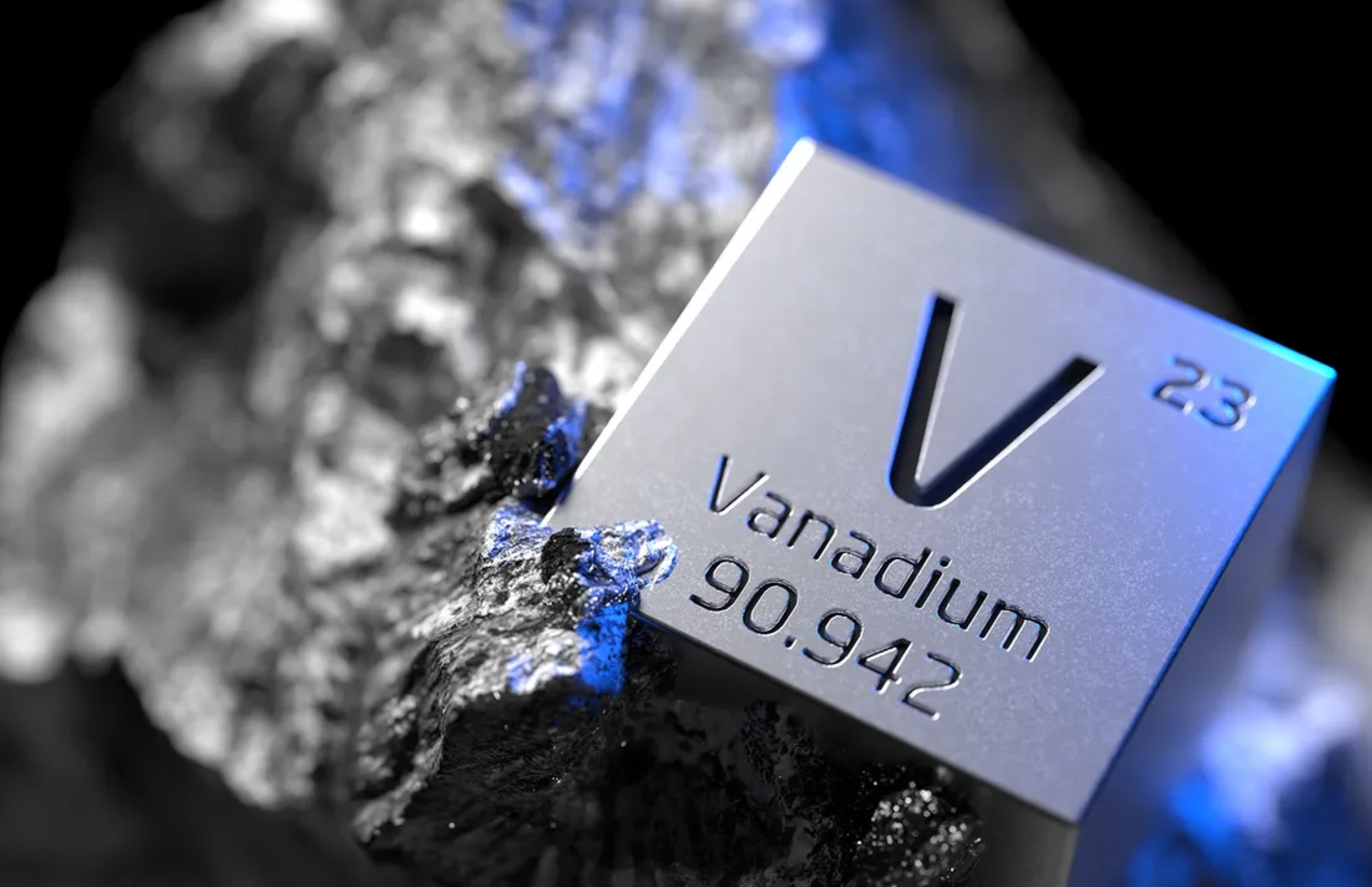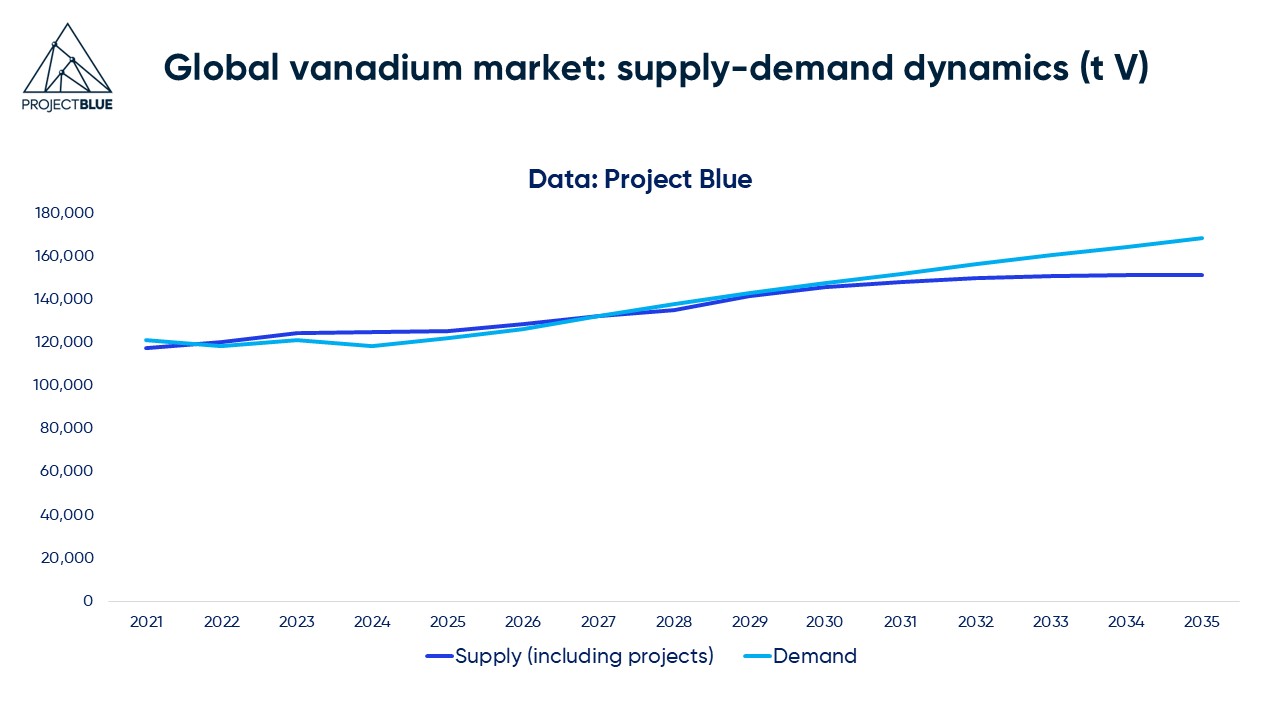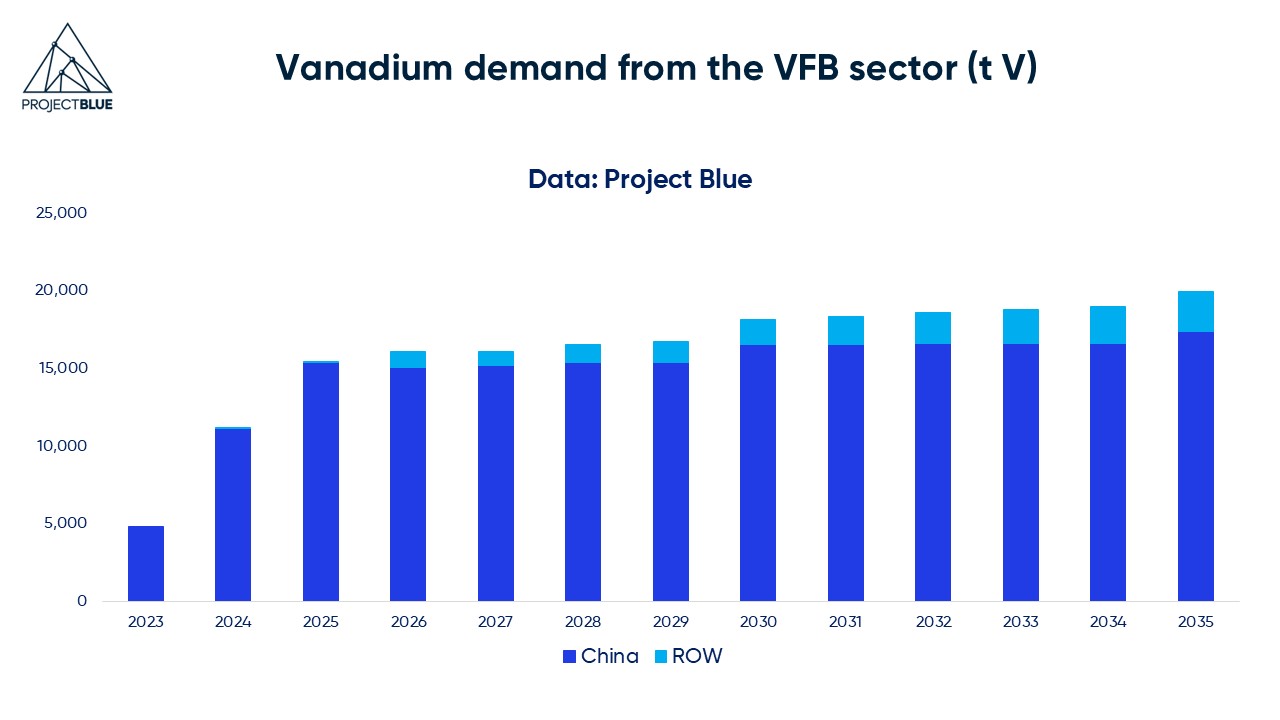Will vanadium supply pressure persist over the near term?
Opinion Pieces

22
Oct
2025
Will vanadium supply pressure persist over the near term?
The vanadium market is currently characterised by stagnant prices; according to Project Blue’s estimates, this is a direct result of a persistent market surplus.
This oversupply is fundamentally driven by two key factors: stagnant or even declining consumption in the traditional steel sector and much slower-than-expected demand growth in the potentially promising vanadium flow battery (VFB) segment. The core of the issue lies in a fundamental supply-demand mismatch.
On one hand, China’s vanadium output has seen continuous growth, with production in 2024 reaching approximately 76.0kt V and accounting for 61% of the global total. On the other hand, domestic consumption in China has not kept pace, falling to 70.4kt V in 2024. Consequently, the oversupply is likely to persist in the short term, prolonging the market’s challenging period.
From 2020 to 2024, China’s vanadium output continued to grow, with leading producers such as Jianlong Steel and HBIS Chengde Steel maintaining overall stable production. However, Pangang’s output was reduced by approximately 280tpm V from March to October 2025 (which accounted for 1.6% of China’s production in 2024), because of environmental inspections.
Nevertheless, production increases at Desheng’s Yunnan plant and Dazhou Steel helped to maintain relatively stable overall co-production output. Meanwhile, stone coal-based vanadium producers have largely halted operations due to severe losses, whilst secondary resource-based producers continue to operate at a slight loss to maintain market share.
The key point is that these localised production cuts have failed to fundamentally reverse the market oversupply, thus failing to break the price deadlock. Project Blue expects that China’s supply side will passively adjust based on demand, with little potential for strong growth momentum.
Against the backdrop of persistent oversupply and weak demand, mounting inventories have emerged as a critical factor exacerbating the market’s downturn and prolonging the price deadlock. The primary entities stocking vanadium pentoxide are traders in China. As estimated, total inventories in the market reached approximately 43kt V by the end of 2024 and are expected to exceed 47kt V by H1 2025.
A significant portion of this stockpiled material was accumulated when prices were around RMB100,000/t (US$13,900/t). Following the price decline, traders continued purchasing material to lower the average cost of their existing inventories, a strategy that inadvertently adds further supply pressure.
This inventory dynamic is not limited to traders. Some steel mills, such as JISCO, which previously did not produce vanadium, attempted to generate additional revenue from vanadium to offset losses from their core steel operations. However, due to persistently low vanadium prices, their production lines have remained idle. Instead of processing steel slag, these producers are merely stockpiling slag for future production, when prices become favourable. It has been revealed that JISCO currently holds approximately 50kt (gross) of vanadium slag.
This massive visible and potential inventory, built during a period of structural oversupply, forms a substantial “inventory overhang.” This overhang will continue to suppress price recovery and pose a persistent risk to market stability, as any price increase could trigger the release of these stockpiles, thereby capping the upside.

Future demand developments will have a limited impact on reducing the vanadium oversupply in next three years. Although increased vanadium intensity in steelmaking will partially offset the demand impact of reduced crude steel output, overall consumption continues to be sluggish. The stark reality is that in 2024, China's steel sector consumed only 50.2kt V, a significant drop from 65.6kt V in 2020, with its consumption share falling from 96% to 76% of total Chinese vanadium consumption.
In the fastest-growing vanadium demand sector, consumption from VFBs totalled 10kt V and accounted for 15% of domestic in 2024. However, after China abolished its mandatory energy storage allocation policy in February 2025, the sector shifted from policy-driven support to market-oriented competition.
Due to their high costs, newly announced VFB projects decreased significantly and market growth slowed noticeably after February 2025. Project Blue forecasts that approximately 2.5GWh of VFB grid-connected projects will be deployed in 2025, which will require over 10.3kt V, accounting for 21% of total Chinese demand.
Although VFBs have reached the commercial development stage, they currently lack a clear competitive advantage, particularly in terms of short-term profitability. Whether this technology can ultimately achieve scaled application fundamentally depends on cost reductions and efficiency gains through technological breakthroughs, along with the establishment of mature business models—all of which require time to materialise.
Therefore, overall demand is expected to remain weak in the near term, whilst long-term growth drivers face significant uncertainty, meaning that a fundamental rebalancing of the supply-demand structure will require patience. The massive overhang of vanadium pentoxide inventories, which will take considerable time to draw down, compounds this challenge.
This inventory burden will continue to act as a persistent drag on prices, even under the optimistic assumption that demand will begin to outpace supply within the next two years.
In summary, a combination of structural oversupply, sluggish demand, and a substantial inventory overhang points to a continued period of low global vanadium prices, with a significant price recovery unlikely in the foreseeable future.